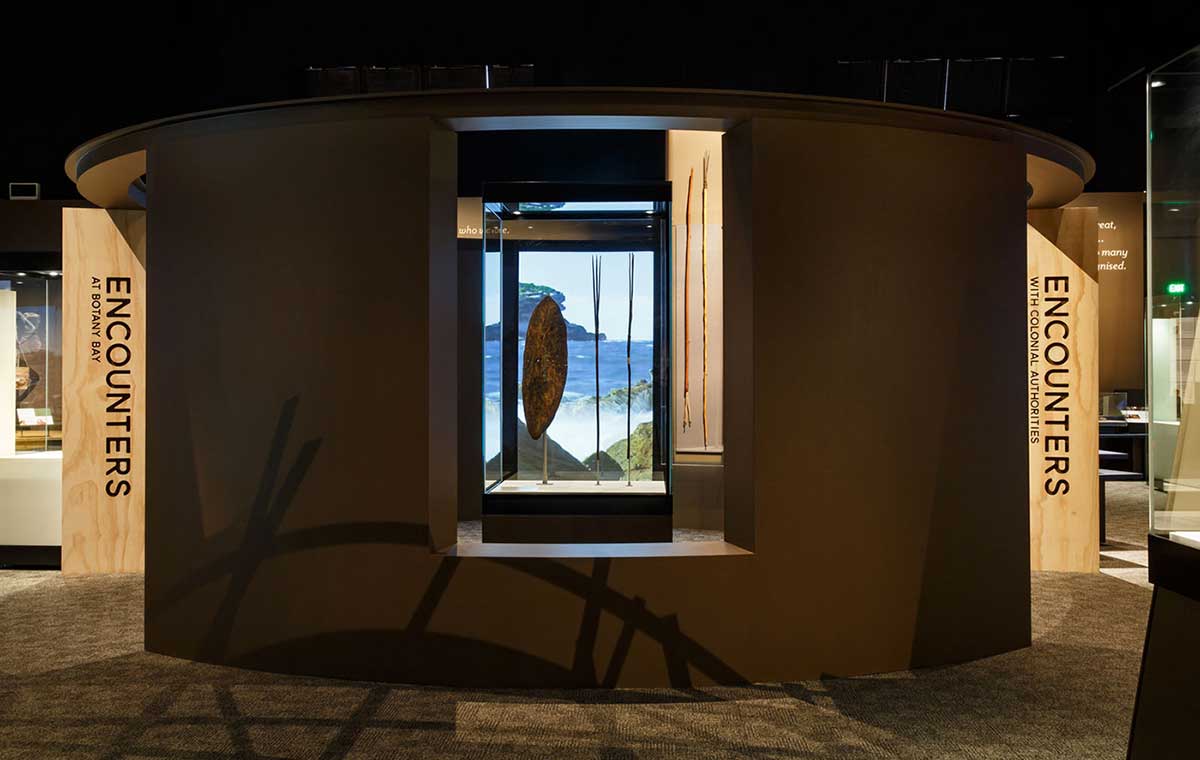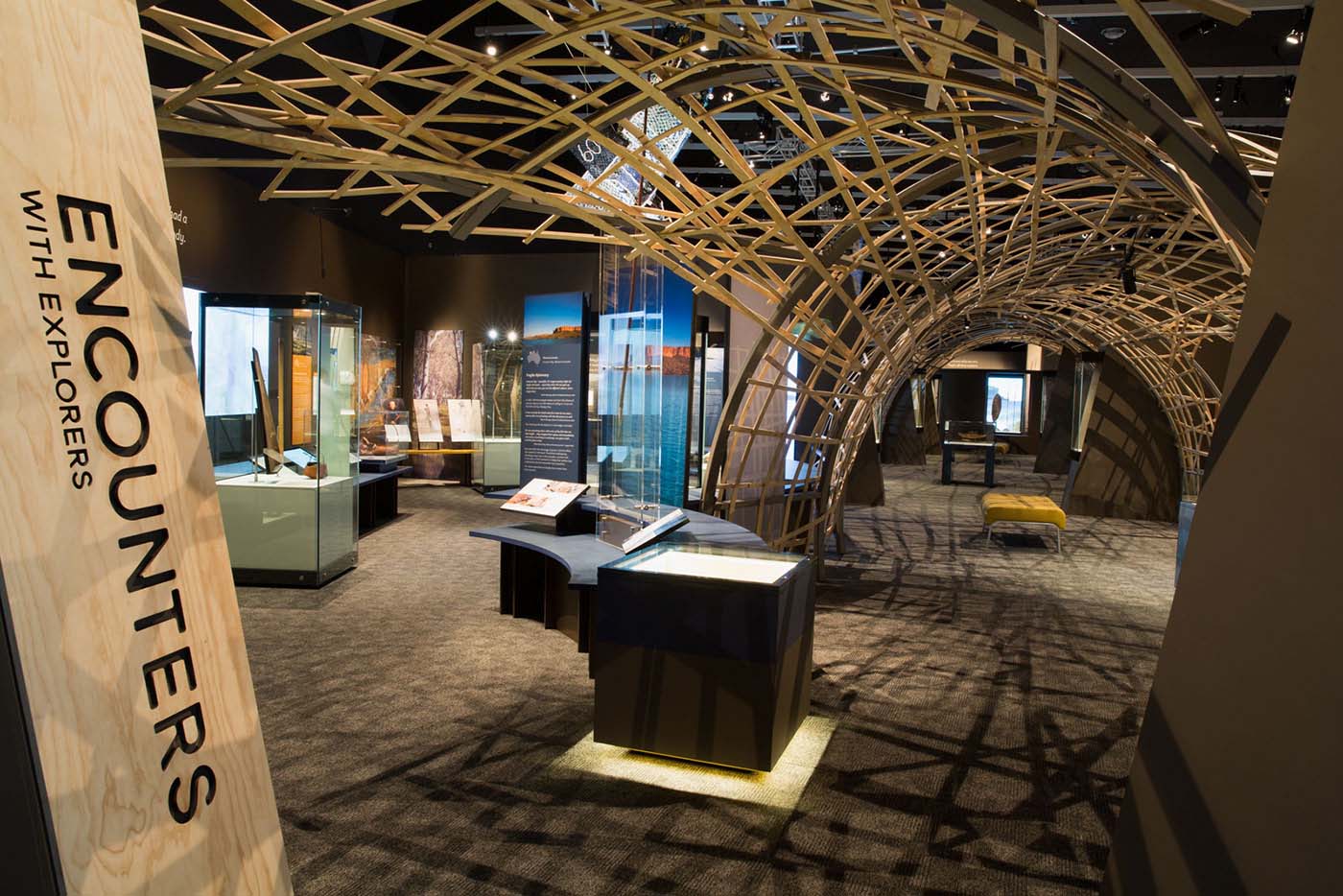The design of the Encounters exhibition was developed around a series of key themes – the historical objects from the British Museum, the encounters with and connections to place/country, and the contemporary communities’ dialogue with the objects. These themes inform the layout, form and rhythm of the exhibition.
The core ‘encounters’ of the exhibition are presented in displays that use relationships to place as a key identifier. A large mural or projection of the landscape is employed as an initial feature. Each ‘encounter’ surrounds the object from the British Museum, as a contemporary conversation and response to the historical object. The British Museum objects have their own aesthetic identity within the exhibition.
The unfolding story of these ‘encounter’ modules surround a central sculptural feature in the gallery space that takes the form of a giant woven fish trap. The trap form is 30 metres long and 3.6 metres high, is covered in an open lattice of plywood and runs through the exhibition space. Openings in the form allow visitors to enter the fish trap at various points.
The fish trap feature is a response to the exhibition’s content, which for many will be a culturally significant and emotional experience. It is a calm enclosed space, in contrast to the active open space surrounding it. Seating in the trap provides a place for visitors to gather their thoughts. A central audio experience features quotes from particular communities and elders about the exhibition and the significance of the historical objects.
In conventional exhibition design processes, the designer is required to interpret a pre-defined story structure without much room to inform or shape the narrative through the design process. In this exhibition we (as designers) were brought to the project at an early stage. It has been extremely valuable from a design perspective to work alongside the curators in the shaping of this complex story, which we believe has resulted in the creation of a more integrated, holistic and embodied experience for the visitor.
Note: This webpage was first published in 2016. More recently some scholars have questioned the provenance of the shield.
You may also like

